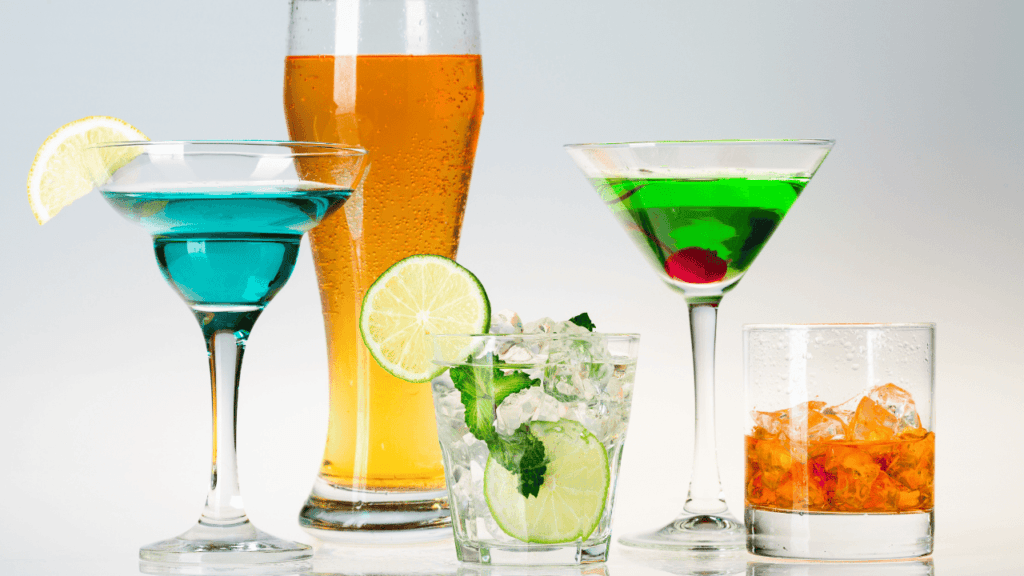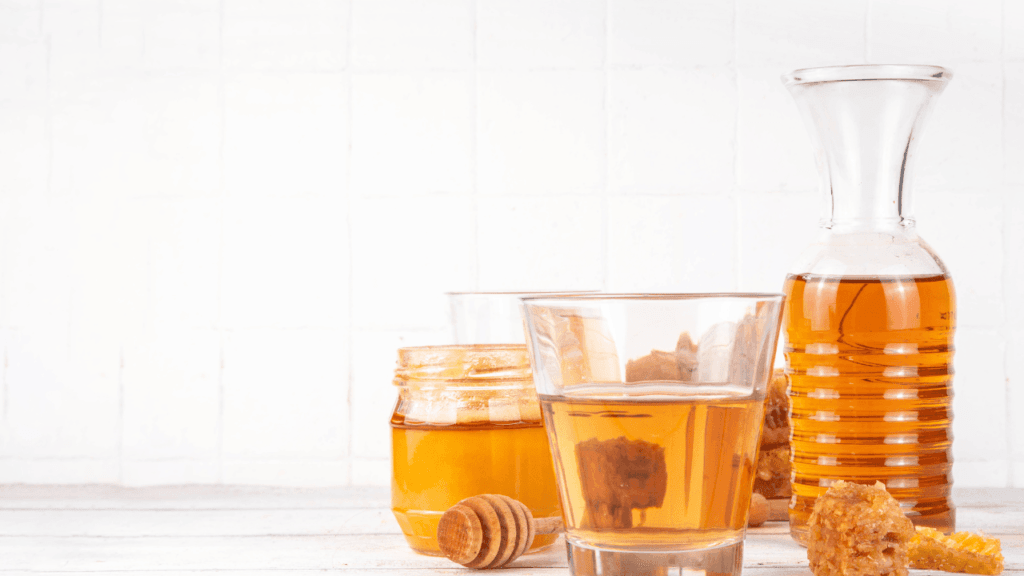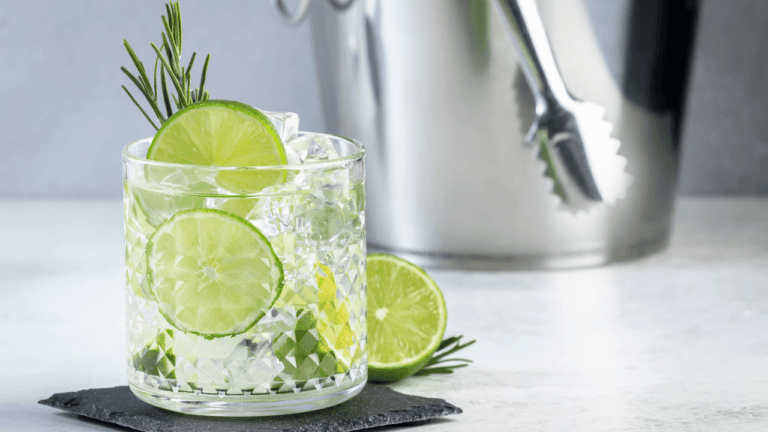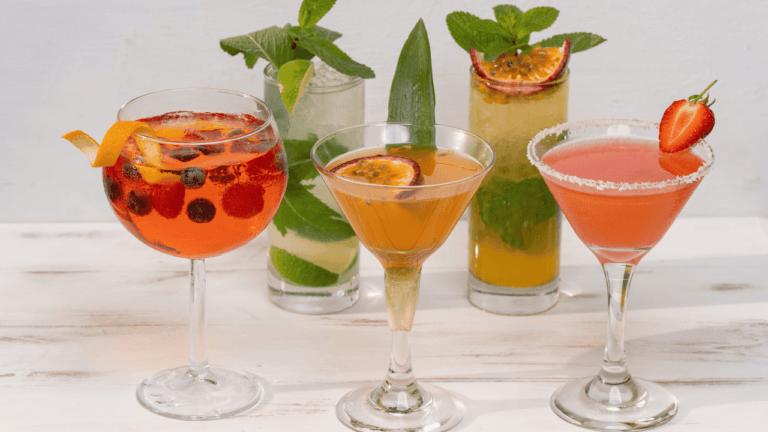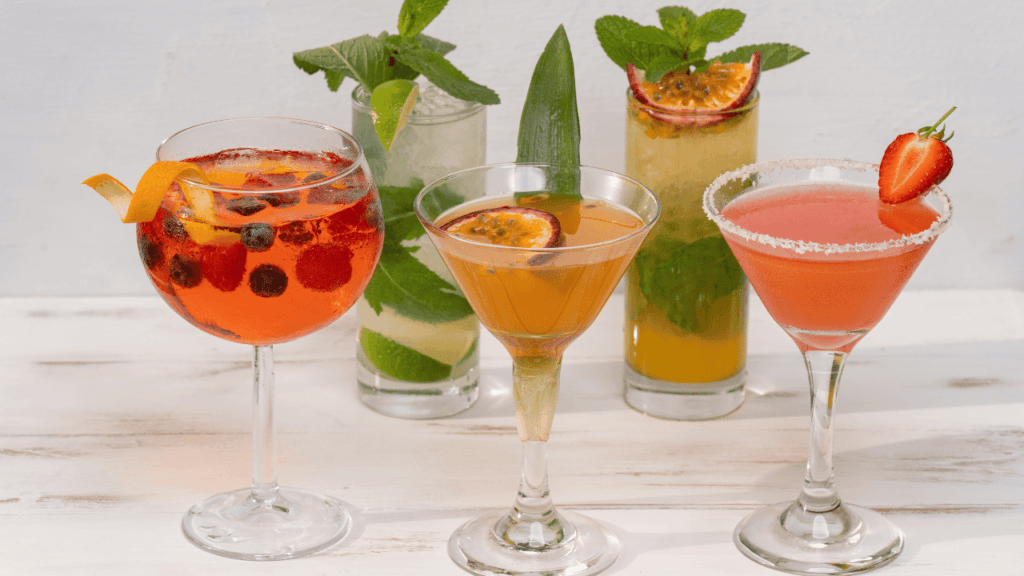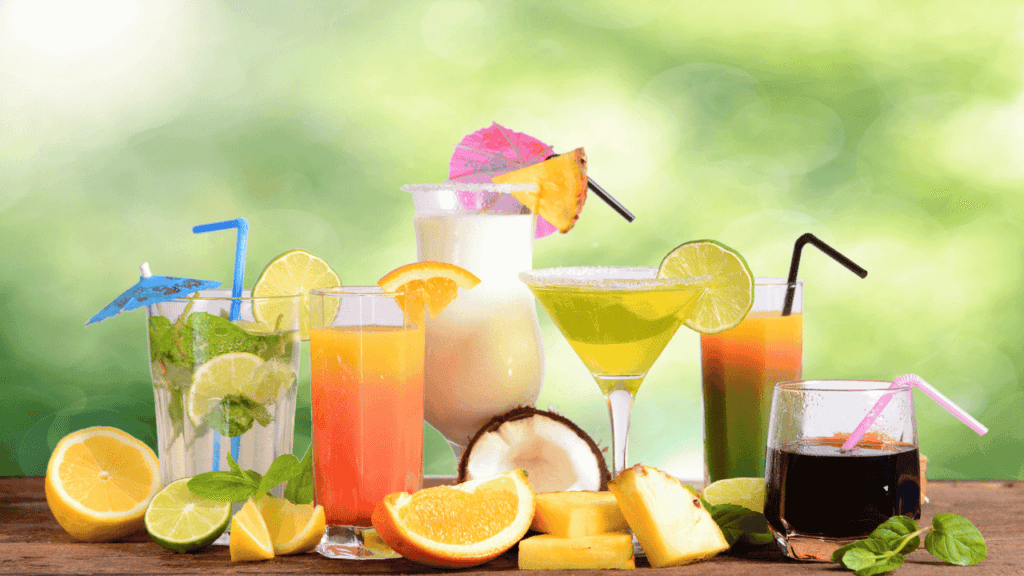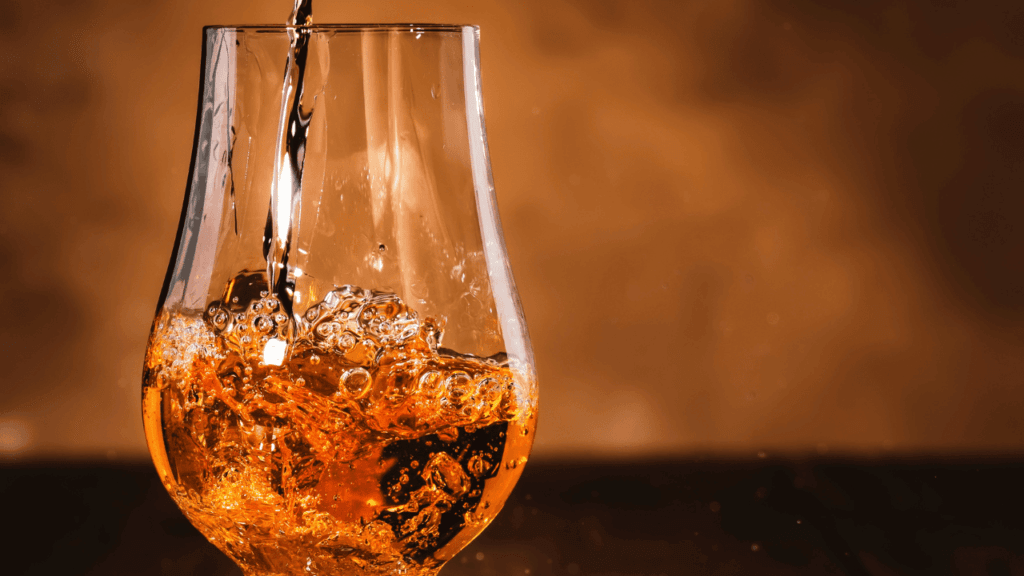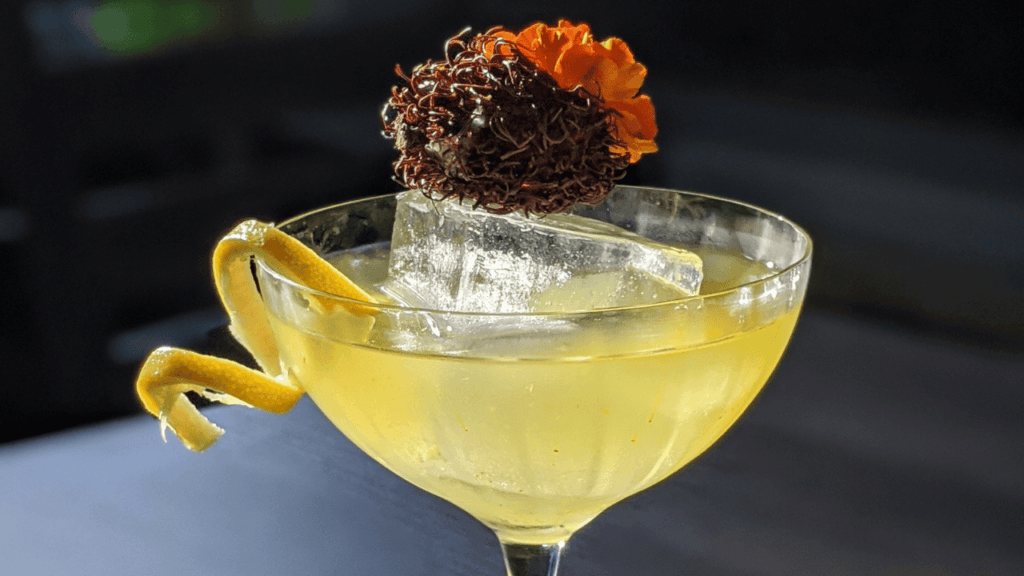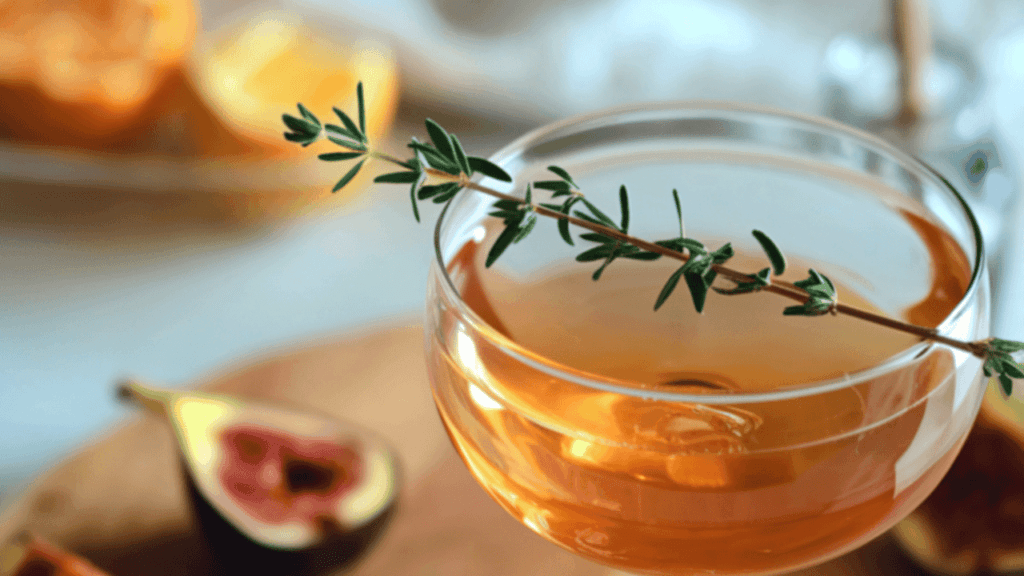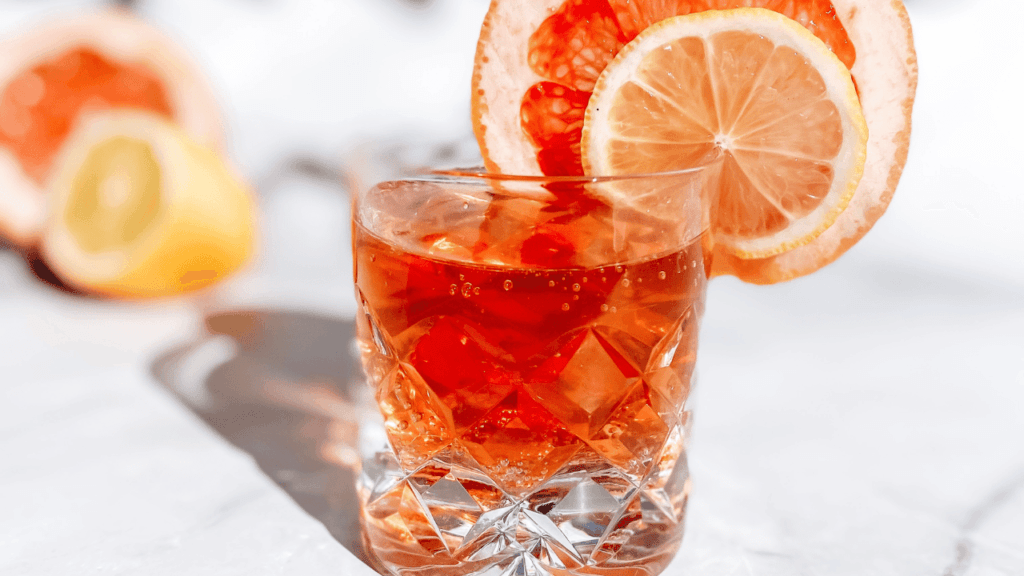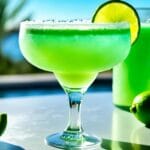Best First Alcoholic Drink. If you are new to cocktails, pick options that highlight flavors over strength. Classic recipes like a Margarita, Moscow Mule, or Whiskey Sour use clear, short ingredient lists and deliver balanced taste.
Think citrus, gentle sweetness, and bright aromatics. A well-made Margarita blends tequila, Cointreau, and lime for a crisp profile. A Moscow Mule pairs vodka with ginger beer and lime for zesty fizz. A Whiskey Sour mixes whiskey, lemon, and a touch of sugar for approachable depth.
Expect easy techniques. Shaken sours, built highballs, and stirred classics teach you to notice flavors without fuss. Choose longer, lower-ABV serves to savor taste and aroma as you learn what you like.
Key Takeaways
- Pick cocktails with familiar flavors—citrus, sweet, or herbal—to ease into tasting.
- Classic recipes provide reliable ingredients and clear method for home or bar orders.
- Start with balanced, moderate-strength options to focus on taste, not burn.
- Simple technique—shaken or built—often matters less than clarity and quality of ingredients.
- Try one well-made cocktail at a time and note preferences to guide your next choice.
How to Choose Your First Cocktail the Smart Way
Let your favorite fruit or spice guide the way to a satisfying cocktail. Start by matching flavors you already enjoy—citrus, berry, ginger, or herbal—to reduce surprises. Simple two-ingredient builds like a Cape Codder (vodka + cranberry) or a Screwdriver (vodka + orange juice) show how mixers can shape taste without complex techniques.
Start with flavor, not strength
Pick a familiar profile. A citrus-forward option with lime or lemon juice reads as bright and clean. If you prefer fruity notes, cranberry or orange keeps things friendly and easy to sip.
Keep ABV modest and ingredients simple
Favor longer serves that stretch spirits with soda or juice. Try a low-ABV Spritz—equal parts Aperol and Prosecco plus a splash of soda—for light, bubbly sipping that limits alcohol impact.
- Choose cocktails with short, recognizable ingredients to learn what you like.
- Ask a bartender to make it lighter or less sweet to match your taste.
- Use familiar mixers—orange, cranberry, ginger, or soda—to anchor new flavors.
- Pay attention to how a drink makes you feel and adjust sweetness or dilution next time.
Quick-Start Picks: Easy, Refreshing Drinks Beginners Love
Pick a few easy, citrus-forward mixes to start your tasting with confidence. These four classics show how simple recipes and fresh ingredients make great results. They focus on balance, fizz, and clean aroma so you can learn what you prefer.
Moscow Mule
Recipe: 2 oz vodka, 4–6 oz ginger beer, 0.5 oz lime juice.
Build over ice in a copper mug and stir. The ginger beer and lime juice make a zesty, quenching profile, while the copper mug helps keep the serve icy and aromatic.
Classic Margarita
Recipe: 2 oz silver tequila, 1 oz Cointreau, 1 oz lime juice; shaken and served over ice with a salted rim.
This classic margarita balances bright lime juice with orange liqueur and agave notes. A salted rim adds contrast that lifts the flavors.
Whiskey Sour
Recipe: 2 oz whiskey, 1 oz lemon juice, 1 tsp sugar; optional egg white for texture.
Dry shake with egg white, then shake with ice and strain over fresh ice. The whiskey gives depth, lemon adds tang, and egg white creates a silky foam if used.
Spritz
Recipe: Equal parts Aperol and Prosecco, splash of soda in a wine glass with ice; garnish with an orange slice.
A Spritz is low-ABV, bubbly, and gently bitter-sweet — ideal for long afternoons and easy to sip.
- Common thread: crisp citrus, effervescence, and proper ice make these cocktails approachable.
- Use fresh citrus and chilled mixers to improve balance.
- Order or ask to adjust sweetness if you want a drier or brighter profile.
Vodka Classics with Clean, Friendly Flavors
Vodka shines when paired with bright mixers that keep flavors clean and simple. Its neutral profile makes it a great platform for crisp, easy-to-like cocktails. Below are approachable vodka options and short notes on technique and balance.
Moscow Mule and why ginger beer matters
Recipe: 2 oz vodka, 4–6 oz ginger beer, 0.5 oz lime juice.
The moscow mule relies on spicy, carbonated ginger beer for its zip. The soda’s heat and sweetness shape the drink more than the spirit, so choose a ginger beer that matches how bold you want the mule to be.
Cosmopolitan: tart, pink, and balanced
Recipe: 1.5 oz citrus vodka, 1 oz Cointreau (orange liqueur), 0.5 oz lime juice, 0.25 oz cranberry juice; shake and strain into a cocktail glass, garnish with lime.
Adjust the liqueur or lime ±0.25 oz to shift sweetness or tartness. The cosmo’s vivid hue and citrus edge make it an easy crowd-pleasing cocktail.
Screwdriver and Cape Codder: simple highballs
Two-ingredient builds are very forgiving. Screwdriver pairs vodka with orange juice, while a Cape Codder uses cranberry juice. Serve tall over fresh ice to keep juices bright and refreshing.
Vodka Martini basics
Recipe: 3 oz vodka, 0.5 oz dry vermouth; stir with ice and strain into a chilled martini glass.
Stirring preserves clarity and silky texture. Finish with a lemon twist for bright citrus oils or an olive for a savory, briny note—choose what you prefer.
- Tip: Pre-chill glasses and use good ice for crisper flavor.
- Use tall glassware for highballs and stemmed glassware for spirit-forward serves.
Tequila for First-Timers: Bright, Citrusy, Crowd-Pleasing
Tequila brings bright agave notes that pair naturally with citrus and soda for easy sipping. These mixes show how simple ingredients make balanced, approachable cocktails. Choose blanco for clean agave or reposado for a softer, oaky edge.
Classic Margarita
Recipe: 2 oz silver tequila, 1 oz Cointreau, 1 oz lime juice; shaken over ice, serve with a salted rim.
Note: Fresh lime juice brightens the profile. Ask for a half‑rim if you want control over salt per sip.
Paloma
Recipe: 2 oz tequila, 0.5 oz lime juice, top with grapefruit soda in a salt‑rimmed glass.
This highball is light, bubbly, and gently bitter‑sweet—perfect for daytime sipping.
Tequila Sunrise
Recipe: tequila, orange juice, and grenadine poured to create a layered gradient.
Familiar juice and soft sweetness make this a friendly orange‑forward option.
- Tip: Keep pours modest to gauge how tequila’s flavors affect you.
- Use fresh citrus and proper ice for better balance and dilution.
- These cocktails are common in U.S. bars, so ordering is straightforward.
Rum Refreshers: Sweet, Minty, and Tropical
Rum cocktails often balance bright citrus and soft sweetness for easy, tropical sips. These mixes show how a few fresh ingredients make drinks that are fun to taste and simple to order.
Mojito
Recipe: Muddle a few mint leaves gently, add 2 oz white rum, 0.75 oz lime juice, 0.5 oz simple syrup, shake and strain into a highball with ice. Top with club soda and garnish a sprig of mint.
Tip: Avoid over-muddling mint; press to release aroma without bitterness for a clean, bright finish.
Daiquiri
Recipe: 2 oz rum, 0.75–1 oz lime juice, 0.5–0.75 tsp sugar; shake with ice and strain. This shaken sour is crisp and not blended—pure citrus structure without dilution.
Dark and Stormy
Recipe: 2 oz dark rum, top with ginger beer, finish with a lime wedge. The molasses-rich rum meets spicy ginger beer for a bold, zesty contrast.
Note: Ginger beer choice changes spice level—taste brands to find the right kick.
Piña Colada & Painkiller
For creamy tropical cocktails, combine white rum, a splash of dark rum, pineapple juice, and coconut cream. These feel like dessert in a glass and pair well with salty, grilled snacks.
- Quick tips: Chill glassware and use ample ice to keep long serves cold.
- Adjust sugar or simple syrup to keep the citrus lively.
- Light rum keeps cocktails crisp; aged rum adds caramel and spice for depth.
Best First Alcoholic Drink Gin Gateways: Botanical but Balanced
Gin shows its range when mixed with bright citrus and a touch of sweetness. These simple, citrus-led cocktails let juniper, citrus, and herbal flavors come forward without fuss. Start with one of the classic builds below to learn what you like.
Gimlet
Recipe: 2 oz gin or vodka, 0.75 oz simple syrup, 0.75 oz lime juice; shake and strain into a cocktail glass.
Tip: A Gimlet is clean and tart-sweet. If juniper feels strong, have it made gin-forward or softened with vodka.
French 75
Recipe: Gin, simple syrup, and lemon juice shaken with ice; strain and top with Champagne.
This cocktail adds sparkle and elegance. Lemon juice brightens the base, while bubbles keep the serve light and celebratory.
Tom Collins
Recipe: 2 oz Old Tom gin, 1 oz lemon juice, 0.5 oz simple syrup; build in a tall glass with ice and top with club soda.
The Tom Collins tastes like sparkling lemonade with a botanical backbone. Use plenty of ice and add soda at the end to preserve fizz.
- Why gin? It offers botanical complexity—juniper, citrus, and herbs—so even simple mixers produce layered results.
- Use London Dry or softer styles if you want clearer or milder profiles.
- Keep citrus fresh and adjust simple syrup to keep cocktails bright and balanced.
Whiskey Without the Burn: Smooth Entrées
Whiskey cocktails can feel refined without harsh heat when balance guides the recipe. These three classics show how citrus, sugar, and careful stirring or shaking tame bold spirit notes.
Whiskey Sour
Recipe: 2 oz whiskey, 1 oz lemon juice, 1 tsp sugar; optional egg white. Dry shake, then shake with ice and strain.
Notes: Lemon juice gives vivid tang; egg white adds a creamy foam cap for texture.
Old Fashioned
Recipe: 2 oz bourbon or rye, 2 dashes Angostura bitters, 1 sugar cube or 1 tsp sugar; build in glass and stir. Express an orange twist over the surface.
Tip: Use a large ice cube to slow dilution and keep the serve smooth.
Manhattan
Recipe: 2 oz rye whiskey, 1 oz sweet vermouth, 2 dashes Angostura bitters; stir and strain into a chilled coupe.
Why it works: The vermouth’s herbal sweetness and bitters create a silky, stirred cocktail that softens rye’s spice.
- Quick advice: Ask for extra ice or a slightly longer build if you prefer gentler strength.
- Bourbon reads sweeter (vanilla, caramel); rye adds spice—both suit balanced, citrus-led cocktails.
- Never shake an Old Fashioned; technique preserves clarity and aroma.
Brunch-Friendly Starters: Bubbles and Savory Sips
Brunch calls for lively bubbles and savory sips that wake up the palate without rushing the meal.
Mimosa: A simple split of 2.5 oz Champagne and 2.5 oz orange juice creates a light, fruity glass that pairs well with eggs and bacon. Use well-chilled sparkling wine and build directly in a flute for quick service.
Mimosa, Bellini, and Sangria
Bellini: Prosecco with peach purée (sometimes with a splash of raspberry) yields a delicate, fruit-forward pour. It reads soft and aromatic with gentle bubbles.
Sangria: A wine-based punch stretched with assorted juices and fruit is ideal for groups. Make it in a pitcher and let fruit macerate so the flavors meld before serving.
- Fresh juice lifts aroma and balance; add a small acid tweak to keep sweetness lively.
- Use chilled wine and moderate pours to keep brunch lower-ABV and sessionable.
- Garnish with orange or peach slices and fresh herbs to cue aroma and first sip.
Bloody Mary
Bloody Marys use vodka with tomato juice, lemon, hot sauce, Worcestershire, horseradish, and pepper. They are highly customizable—tune heat, salt, and garnish to taste.
Serve over ice for a longer, cooler sip. These savory options pair especially well with salty, fried, or egg-based dishes at brunch.
Beginner Classics Every Bartender Knows
Bar staples reveal how simple recipes teach balance, technique, and aroma. These classics are a practical way to explore bitter, floral, citrus, and fruity profiles without fuss.
Negroni
Recipe: 1 oz gin, 1 oz Campari, 1 oz sweet vermouth; stir with ice and strain over a large cube.
The Negroni is a classic cocktail and a benchmark for bittersweet balance. Ask for a lighter Campari touch if you want less bitterness on the first sip.
Aviation, Sidecar, and Pimm’s Cup
Aviation: 2 oz gin, 0.5 oz maraschino liqueur, 0.75 oz lemon juice, 0.25 oz crème de violette; shake and strain. Floral and lightly adventurous.
Sidecar: Cognac, Cointreau, lemon juice; shaken and finished with an orange twist for bright citrus oils.
Pimm’s Cup: 1.75 oz Pimm’s No.1 topped with ~5 oz lemonade and garnished with mint, orange, strawberries, and cucumber for a fruit-laced, sessionable serve.
“Stirring spirit-forward drinks preserves clarity and silky texture; shake citrus-led builds for proper aeration.”
- Tip: Use quality sweet vermouth and keep it chilled to protect herbal character.
- Express citrus peels to lift aroma on sours like the Sidecar.
- If unsure, try a small pour or split a cocktail to test florals or bitter notes.
Essential Mixers and Ingredients for Great First Drinks
Good mixers turn basic spirits into balanced, approachable cocktails. A small kit of quality items lets you make many classics with confidence. Think of these as the core ingredients that shape aroma, sweetness, and texture.
Citrus: lime juice, lemon juice, and fresh vs. bottled
Fresh citrus matters. Fresh lime juice and lemon juice deliver brighter acidity and vivid aroma that bottled products rarely match.
Use fresh squeeze for Margaritas and Whiskey Sours. If you must use bottled, choose high-quality juice and taste before adding more.
Sweeteners: simple syrup vs. sugar cubes
Simple syrup dissolves instantly and gives consistent sweetness in cocktails. It’s easy to make at home with equal parts sugar and water.
Sugar cubes are traditional in an Old Fashioned and require stirring to blend. Keep both options available for different textures and presentation.
Bitters, ginger beer, and vermouth: when and why to use
Bitters are the seasoning of classic cocktails; Angostura is standard for Old Fashioneds and Manhattans. A few dashes go a long way.
Ginger beer brings spice and fizz—vital for a Moscow Mule or Dark and Stormy. Vermouth matters for stirred recipes: sweet vermouth for Negroni, dry for a Martini. Store vermouth chilled to keep it fresh.
- Quick kit: fresh citrus, simple syrup, aromatic bitters, ginger beer, one quality vermouth.
- Ice counts as an ingredient—use good ice and proper sizes for balance.
- Measure with a jigger so your ingredients and cocktails stay repeatable and reliable.
Glass, Ice, and Garnish: Small Details, Big Flavor
Presentation shapes perception. The right glass, the correct ice, and a precise garnish make cocktails smell and taste better before the first sip.
Choose appropriate glassware. Highballs suit long, carbonated serves like a Collins or Mule. Rocks glasses hold spirit-forward pours over a single large cube. A chilled cocktail glass is ideal for shaken or stirred up cocktails such as a Martini or Manhattan.
Highball, rocks, and cocktail glass basics
Use a tall glass for fizzy, long pours and a low, heavy rocks glass for whiskey-forward sips. For strained cocktails, a chilled cocktail glass preserves aroma and texture.
Ice matters: large cubes vs. crushed
Large, clear ice cubes melt slowly and keep structure in Old Fashioneds and other spirit-forward serves.
Crushed ice dilutes faster and chills instantly—perfect for tropical or ultra-refreshing highballs.
Salt rims, mint leaves, lemon twist, and orange peel oils
A copper mug keeps a Mule icier and highlights ginger notes. A clean lemon twist or orange peel, expressed over the surface, adds bright oils that transform aroma and the first sip.
Gently slap mint leaves to release scent without bruising. Use half-rims of salt to control salinity. Always pick fresh, dry garnishes—wilted herbs and ragged peels add bitterness.
- Tip: Store a few cocktail glasses chilled for spirit-up serves.
- Glass + ice + garnish is a simple finishing kit that elevates any casual pour into a refined experience.
Best First Alcoholic Drink Stir, Shake, or Build: Simple Techniques for New Drinkers
Knowing when to agitate or gently stir is the quickest way to improve your pours. A clear approach makes cocktails taste better and feel more confident in your hands.
When to shake vs. when to stir. Shake citrus- or juice-forward recipes to aerate, chill fast, and integrate ingredients. This is the right way for Margaritas and Whiskey Sours, where fresh juice needs brisk movement.
Stir spirits-only classics like a martini or Manhattan with a mixing glass. Gentle stirring preserves clarity and a silky mouthfeel. Aim for 20–30 seconds depending on how cold and diluted you want the serve.
How to dry shake safely with egg white
Dry shake first: Combine the egg white and other ingredients and shake without ice to emulsify and build foam. Then add ice and shake again—this two-step way gives glossy, stable foam.
“Dry shake, then shake with ice; fine strain for a smooth foam and clean texture.”
- Shake sours hard for 10–12 seconds to chill and froth.
- Fine strain shaken cocktails to remove ice shards and pulp.
- Build in-glass for highballs: ice, ingredients, then top with carbonation last.
- Keep tools simple: shaker, mixing glass, bar spoon, strainer, and jigger.
Taste before serving and adjust syrup or acid if needed. Practice this way and you’ll find a repeatable method that improves every cocktail you make.
Flavor Map: Match Your Taste to the Right First Cocktail
Start by pinpointing whether you prefer fruity, citrusy, spicy, bitter, or fizzy profiles. Use that simple map to steer choices and tell a bartender what you like.
Sweet and fruity
Cosmopolitan: citrus vodka, Cointreau, lime, and cranberry for a bright, puckery sip.
Piña Colada: rums with pineapple and coconut cream for creamy tropical flavors. Amaretto Sour blends amaretto and lemon; an egg white can add soft texture.
Citrusy and crisp
Margarita, Gimlet, and Tom Collins all hinge on fresh lemon or lime and simple balance. These cocktails show how acid defines taste and keeps things lively.
Spicy and zesty
Moscow Mule and Dark and Stormy rely on ginger for warmth and fizz, with lime to cut sweetness. Choose a bolder ginger if you want extra zip.
Bitter, complex, and low‑ABV options
Negroni and Boulevardier are stirred, bittersweet classic cocktail choices—ask for a lighter bitter to start. For lighter pours, Spritz and Mimosa use sparkling wine for bubbly, low‑ABV ease.
- Tell the bar: sweet, tart, spicy, bitter, or bubbly—then sample a small pour.
- Lemon and lime cues are easy tweaks that shift taste quickly.
- Let this map evolve as your palate explores new flavors.
Ordering at the Bar in the United States: Tips for Your First Time
Approach the bar with a clear statement of what you want and one simple tweak. Name the cocktail and the base spirit, then add a short preference so the bartender can tailor it fast.
How to specify your base spirit and sweetness level
Say the cocktail and spirit clearly: for example, “Margarita with tequila, not too sweet,” or “Vodka Mule, extra lime.”
Mention sweetness: ask for “less sweet,” “balanced,” or “drier.” If a recipe uses simple syrup, say you want it reduced or omitted.
Note texture and glass: “tall glass,” “lots of ice,” or “light ice” helps you get the temperature and dilution you prefer.
Ask for house recommendations and low-ABV options
Tell the bartender your flavor leanings—“something citrusy with gin” or “ginger-forward with vodka.”
Ask for low-ABV choices like a Spritz or a wine-based pour such as sangria if you want a gentler pace. Bars often have signature riffs; ask what they do well and be open to a custom, moderate-strength pour.
- Be upfront about bitterness sensitivity so you avoid amaro-heavy cocktails.
- If unsure, ask the bartender to explain terms — they’ll guide you in a friendly way.
- Tip and give feedback; it helps refine your next recommendation.
Best First Alcoholic Drink: Editor’s Shortlist for Beginners
Choose one clear pathway to learn what you like. These five staples are standardized, easy to order, and show distinct flavor families so you can refine your palate fast.
Margarita, Moscow Mule, Mojito, Whiskey Sour, Spritz — why they win
Margarita: bright lime and agave balance make it widely available and simple to sip.
Moscow Mule: ginger beer and lime give zesty refreshment served icy in a frosty mug.
Mojito: mint and lime with light rum and soda offer aromatic, low‑perceived alcohol relief.
Whiskey Sour: citrus and sugar tame whiskey for a tangy, approachable profile; egg white is optional for silkiness.
Spritz: wine-based, bubbly, and lower in strength—great for daytime or long social settings.
What to skip early on
Avoid Long Island Iced Tea early: it mixes many spirits and can reach about 22% ABV, which often overwhelms new tasters.
Do not try the Zombie until you know rum well; its layered syrups and liqueurs hide potent alcohol that can creep up fast.
- Why this shortlist: clear flavor cues (citrus, spice, mint, bubbles) help you learn quickly.
- Start here, note your favorites, and branch into related families—e.g., margarita → paloma; mule → dark and stormy.
Conclusion
Best First Alcoholic Drink, this guide ends with one simple idea: pick a clear flavor family and explore it slowly.
Begin with familiar profiles—citrus, mint, ginger, or sweet—and keep alcohol modest so you learn your taste. Rely on classic recipes as a baseline, then tweak sweetness, acid, or dilution to suit you.
Use simple technique: shake citrus-forward mixes and stir spirit-forward ones. Pay attention to glass, ice, and garnish; small details shape aroma and perception more than you expect.
Try related cocktails one family at a time, note what you like, and ask bartenders for a tailored suggestion. Enjoy responsibly.
